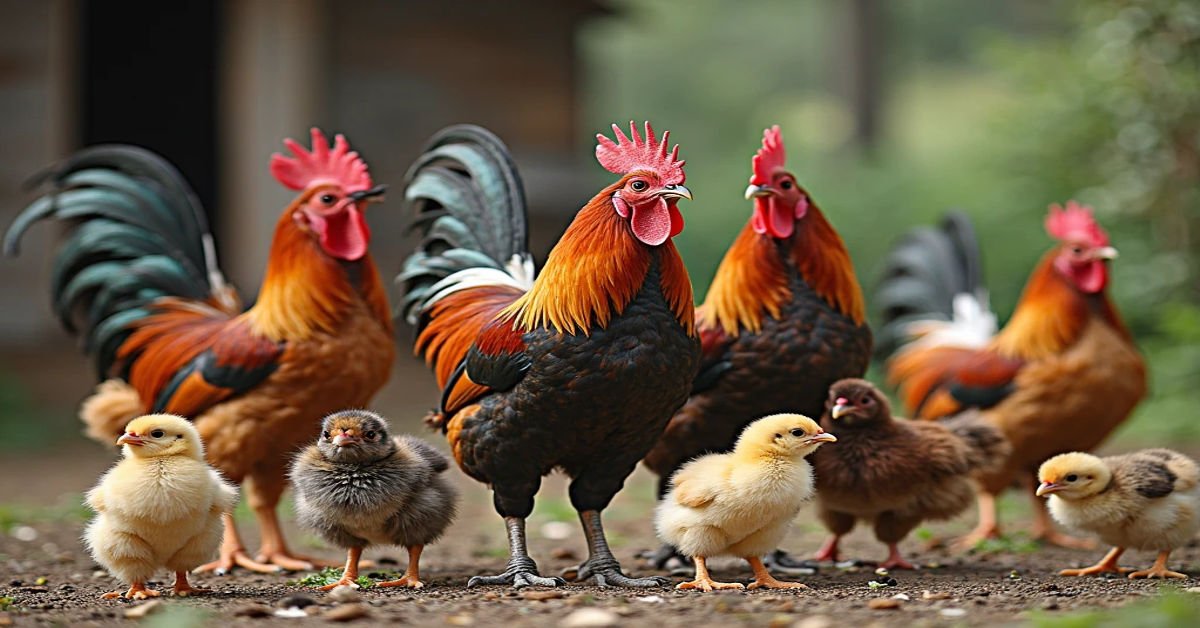Lymphoid leukosis is a viral neoplastic disease of chickens primarily caused by a group of retroviruses. It results in the formation of tumors, particularly affecting internal organs such as the liver. The condition usually emerges after 16 weeks of age, with cases peaking as the birds approach or attain sexual maturity. Due to their prolonged production cycles, it mainly affects laying hens and commercial poultry breeds.
Although it shares some similarities with Marek’s disease—especially in terms of liver involvement—lymphoid leukosis is now rarely encountered due to effective control strategies, particularly selective breeding. In contrast, Marek’s disease remains a significant concern for the poultry industry due to its greater virulence and resistance to control.
Cause:
The causative agents of lymphoid leukosis are Alpharetroviruses, specifically avian leukosis viruses (ALVs), which are part of the Retroviridae family. These viruses are endemic in most commercial poultry populations. However, only a small percentage of infected birds develop clinical disease.
The virus primarily targets the lymphoid tissues, interfering with immune function and eventually leading to neoplastic changes in various organs. Genetic susceptibility plays a significant role, so selective breeding for resistance has been a key control strategy in the poultry industry.
Spread:
A virus can spread in two ways:
-
Vertical Transmission: Infected hens pass the virus to their chicks through the egg.
-
Horizontal Transmission: Chicks that are infected vertically serve as reservoirs, spreading the virus to other birds through direct contact or indirectly via contaminated equipment, feed, or water.
Despite the widespread exposure to the virus in commercial flocks, actual outbreaks of clinical disease are now uncommon due to improved biosecurity and breeding practices.
Symptoms:
The clinical signs of lymphoid leukosis are often nonspecific and subtle, making early diagnosis difficult. Key symptoms include:
-
Weight loss
-
Emaciation
-
Comb becomes pale and bluish
-
Depression
-
lethargy
-
Occasional diarrhea
-
And pale wattles indicate systemic involvement.
-
A distended abdomen, often caused by an enlarged liver pushing against other internal organs.
In many cases, birds are found dead without obvious premonitory signs, highlighting the need for necropsy in suspected cases.
Postmortem Findings:
Upon necropsy, several characteristic lesions may be observed:
-
The liver is markedly enlarged, smooth in texture, and pale in color, often occupying a significant portion of the abdominal cavity.
-
Enlargement of other organs such as the spleen, kidneys, ovary, and bursa of Fabricius is common. Tumors may be visible as discrete nodules or diffuse infiltrations.
-
The bursa of Fabricius, a key lymphoid organ in young birds, often shows neoplastic changes which are considered diagnostic in distinguishing from Marek’s disease.
Histopathological examination is essential for confirmation.
Diagnosis:
Due to its similarity to Marek’s disease, differentiating lymphoid leukosis can be challenging based on gross lesions alone. However, a few distinguishing features aid in diagnosis:
- Tumor presence on the bursa shows it is Lymphoid leukosis.
-
Microscopic examination of affected tissues is often necessary to identify the specific type of neoplastic cells.
-
In certain cases, PCR or virus isolation techniques may be employed in research or high-value breeding flocks to confirm the presence of ALV.
Differential Diagnosis of Lymphoid Leukosis:
There is currently no effective treatment or vaccine available for lymphoid leukosis. Once clinical signs appear, the affected birds rarely recover. Due to its viral nature and the long incubation period, management focuses on prevention rather than cure.
Affected birds are usually culled from the flock to prevent further transmission and to reduce economic losses.
Control:
Effective control of lymphoid leukosis relies on prevention and long-term management strategies:
-
Genetic Selection: The most successful control strategy has been the use of genetic resistance. Breeding programs have significantly reduced the prevalence of susceptible birds in commercial flocks.
-
Biosecurity and Hygiene: Maintaining high standards of biosecurity, including disinfection of equipment and control of personnel movement, helps minimize horizontal transmission.
-
Egg Transmission Control: Since the virus is transmitted through eggs, isolating chicks alone is insufficient. Rigorous screening and culling of carrier hens are essential in breeder operations.
Conclusion:
Lymphoid leukosis is a chronic viral disease of chickens that primarily affects the liver and other internal organs through the formation of tumors. Although once a significant concern in poultry farming, its prevalence has greatly declined due to effective control through genetic selection and strict biosecurity measures. With no available vaccine or specific treatment, prevention remains the cornerstone of disease management. Continued surveillance and responsible breeding practices are essential to keep this condition under control and protect poultry health and productivity.
Frequently Asked Questions (FAQs)
What is lymphoid leukosis?
Lymphoid leukosis is a viral cancer-like disease in chickens caused by avian leukosis virus (ALV), which leads to tumor formation in internal organs such as the liver, spleen, and bursa of Fabricius.
How is the disease transmitted among chickens?
The virus can be transmitted both vertically (from infected hens to chicks through eggs) and horizontally (from bird to bird through direct or indirect contact).
What age group of chickens is most affected?
The disease mainly affects chickens after 16 weeks of age, with the highest incidence occurring around the time they reach sexual maturity.
Can lymphoid leukosis be treated?
No, there is no effective treatment or vaccine for lymphoid leukosis. Management focuses on prevention through strict hygiene, flock management, and genetic resistance.
How is lymphoid leukosis diagnosed?
Diagnosis is usually based on postmortem examination, with liver enlargement and tumors in the bursa of Fabricius being characteristic findings. Lab tests and histopathology may be used for confirmation.
Is it possible to eliminate the disease from flocks?
While complete elimination is challenging due to the virus’s widespread presence, controlled breeding, biosecurity, and early culling of infected birds have significantly reduced its impact in commercial flocks.

